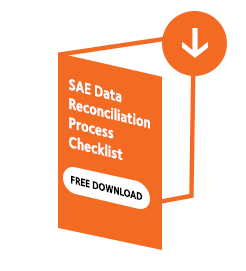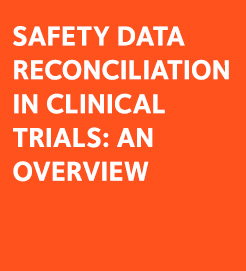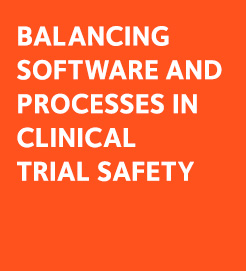Clinical trials can last from a few weeks up to decades. In a short study focused on a mild disease, a clinical team will encounter only a limited number of adverse events (AEs) and serious adverse events (SAEs) while in a long and complex study, hundreds or even thousands of AEs and SAEs are usually collected. Long studies have their own specific challenges and, due to the number of AEs and SAEs, safety data reconciliation can be particularly daunting. Planning ahead and using the right data reconciliation software can make all the difference.
The SAE data reconciliation process is complex in most clinical trial settings, but it is especially challenging in long studies and those exploring serious or life-threatening pathologies with patients who often have several co-morbidities and many concomitant medications.
Such complex trials always generate large volumes of safety data which in turn create a risk of high number of discrepancies between the clinical and safety databases. The reconciliation operations can be particularly complicated and time-consuming, and the risk to delay database lock is great if the task is not performed throughout the study.
Here’s a few considerations to keep in mind when planning the reconciliation of a long study and choosing a data reconciliation software:
Ongoing SAEs
Starting reconciliation early in the study means that, in addition to checking incoming cases, one has to continuously track updates in SAE data, including from events that have previously been reconciled in order to resolve new or emerging discrepancies.
In most trials, it is the rate of enrollment that defines the number of incoming SAEs and impacts the schedule of SAE reconciliation. In long-term studies, patients are enrolled over a limited period and subsequently followed up during a period of time that can sometimes extend to decades. The SAE reconciliation process is therefore mostly driven by events concerning patients exiting the study due to disease progression, safety issues or death, all of which are captured in the safety database. Of course, there are also transient SAEs that do not result in discontinuation. In addition, during the long course of the study, new data related to already reported SAEs may become available, as well as corrections to existing data. All this adds to the volume of data needing quality control and reconciliation and creates higher risks of errors and omissions.
Changing parameters and a fluctuating workload
Many changes are likely to occur during the course of a long study: staff turnover (internal, CRO, investigational sites), updates in regulations and company SOPs, new concomitant medication may become available, devices (e.g.: portable spirometers, electronic diaries, etc.) can be replaced, patients grow in age. Some diseases are seasonal, causing the volumes of work to fluctuate around the year. All these changing parameters create uneven workload, adding yet another challenge as teams need to adapt resources and reconnect work where it was left in several occasions during the course of the study.
Cross-functional and global teams
Furthermore, long and complex trials involve large teams working across several functions, countries and locations who must find ways to work together efficiently and without interruption in all circumstances. In these conditions, without the right processes and data reconciliation software tools, tracking and documenting the reconciliation of all the SAE data points over the time of the long study can easily turn into a nightmare for those in charge.
The advantage of having the right data reconciliation software
Ensuring continuity and preserving consistency of the trial reconciliation process over the entire study length may not be the most difficult challenge of a long and complex study but it is a critical one, exposing to audit findings and costly CAPAs (corrective and preventive actions) if the discrepancies are not corrected or explained.
SAE data reconciliation in long studies is a massive task and the risk of human error is important, especially if the operation is done manually or semi-manually with software not initially aimed at SAE data reconciliation.
Using a data reconciliation software specifically designed for the particular demands of this job will help data managers, clinical and safety teams perform SAE data reconciliation smoothly and efficiently throughout the clinical trial.
DOWNLOAD NOW THE FREE SAE RECONCILIATION HANDBOOK
The Manual / Reference Book with all the topics related to the Safety Data Reconciliation Management.







